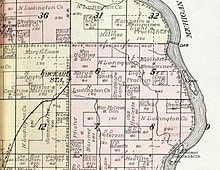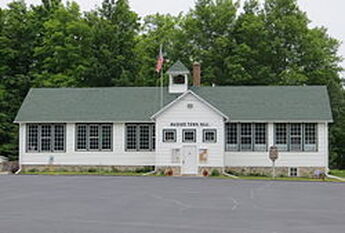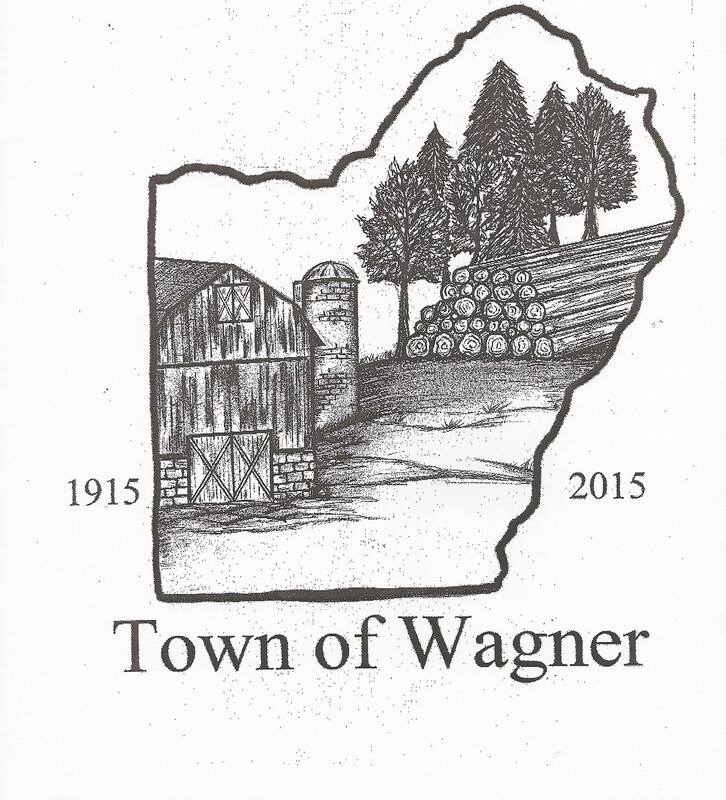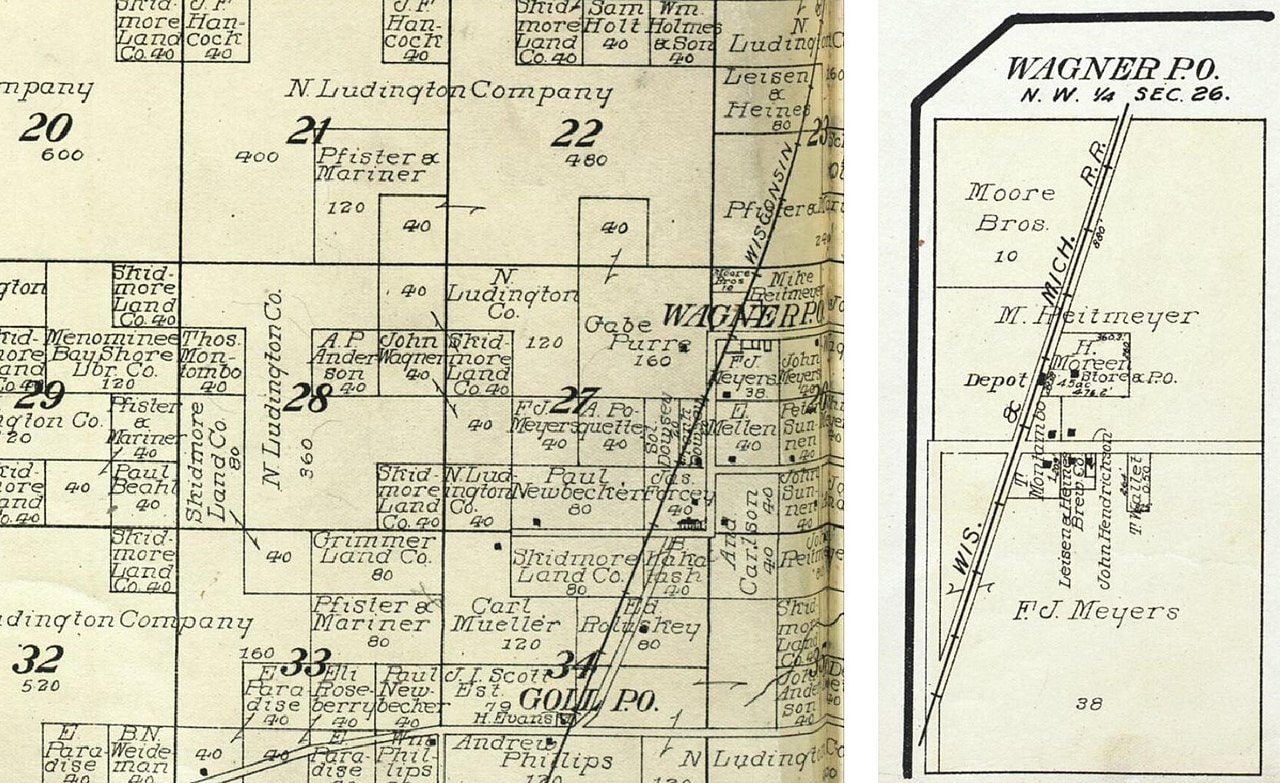About the Town of Wagner
From Wikepedia.com
The Town of Wagner consists of the unincorporated communities of Goll, McAllister, Packard, and Wagner (Also included are the historic settlements, of Bar,Kinsman, and Newton, Wagner was created in 1915, when residents east of Middle Inlet sought separation from Porterfield. The first county board supervisor was Joseph Wagner (1850–1925), for whom the town is named.
The Town of Wagner consists of the unincorporated communities of Goll, McAllister, Packard, and Wagner (Also included are the historic settlements, of Bar,Kinsman, and Newton, Wagner was created in 1915, when residents east of Middle Inlet sought separation from Porterfield. The first county board supervisor was Joseph Wagner (1850–1925), for whom the town is named.
|
Goll is located at the intersection of County Trunk Highway X and Old Rail Road (formerly Right of Way Road) at an elevation of 702 feet (214 m). It is connected by road to Wagner to the north, Middle Inlet to the west, and Wisconsin Highway 180 to the east.
Goll was a stop between Miles and Wagner on the Wisconsin & Michigan (W. & M.) Railway line from Bagley Junction to Iron Mountain. The rail line through Goll was discontinued in 1938, when the tracks were torn out and the rolling stock sold off. Packard is located at the intersection of Country Trunk Highway JJ and Chapin Road,at an elevation of 692 feet (211 m). It is connected by road to McAllister to the south and Koss, Michigan to the north.
Packard was a stop between McAllister and Koss on the Wisconsin & Michigan (W. & M.) Railway line from Bagley Junction to Iron Mountain. The entire town was destroyed by a forest fire in October, 1908. |
McAllister is located at the intersection of Wisconsin Highway 180 and County Highway JJ 11.5 miles (18.5 km) east-southeast of Wausaukee[at an elevation of 692 feet (211 m). It is connected by road to Wausaukee to the west, Packard to the north, Wagner to the south, and Wallace, Michigan to the east via a bridge across the Menominee River.
McAllister was a stop between Wagner and Packard on the Wisconsin & Michigan (W. & M.) Railway line from Bagley Junction to Iron Mountain. The rail line through McAllister was discontinued in 1938, when the tracks were torn out and the rolling stock sold off. Mike Pissato operated a cheese factory in McAllister in the 1920s. The cheese factory was purchased by Theodore Phillips in 1929. In 1946, the Franciscan Friars of the Assumption of the Blessed Virgin Mary Province in Pulaski purchased a riverside property in McAllister as a summer camp and retreat, dubbing it Villa Alvernia.[ |
Wagner is located at the intersection of Old Rail Road (formerly Right of Way Road) and Wagner Road at an elevation of 702 feet (214 m). It is connected by road to McAllister to the north, Goll to the south, and Wisconsin Highway 180 to the east.
Wagner is named after Joseph Wagner (1850–1925), an early settler of the area. Wagner was born in Austria and emigrated to the United States in 1865, initially to Chicago and then relocating to Mankato, Minnesota, where he met and married Susan Dauffenbach (1860–1941). They later moved to what is now Wagner, where Joseph Wagner was the first white settler. Wagner built a cabin there and worked for the sawmills in nearby Wallace, Michigan. Wagner was gradually settled by Swedish, French-Canadian, German, Dutch, Polish, and Czech immigrants. Wagner formerly had a railroad depot, two small hotels, a cheese factory, sawmills and a shingle mill, a dance hall, taverns, and a general store. The Goll schoolhouse stood south of the settlement. In 1908 a fire destroyed all of the structures west of the railroad, including the mills, after which the settlement stagnated. Wagner was a stop between Goll and McAllister on the Wisconsin & Michigan (W. & M.) Railway line from Bagley Junction to Iron Mountain. The rail line through Wagner was discontinued in 1938, when the tracks were torn out and the rolling stock sold off. A post office was established in Wagner in 1897, and it operated until 1934. Before the church was built in Wagner, masses were initially held by Father Joseph Hemmer (1870–1958) in the 1890s and then regularly celebrated at the Bernardy residence by Father Joseph John Fox. A congregation dedicated to Saint Cecilia was established in 1905, and masses were held in various residences in Wagner. Land for a church was purchased in 1917, and a $500 donation was received in memory of Edward M. Dougherty, due to which the decision was made to dedicate the new church to Saint Edward the Confessor in 1918. The church was a "mission church" (a chapel of ease) subordinated to the parish church in Walsh, and it was built by moving and combining two taverns. The main and side altars, altar stone, and linens were brought from the old church at Walsh. Land for the church cemetery was purchased in 1922. The church was moved further from the road in 1924, when a basement was also added, and electricity was installed in 1948. A new altar for the church was built by Gene Rolkosky in 1966. The church was closed and the property sold in 2004.(It is currently maintained as Wilke Hall.) |




